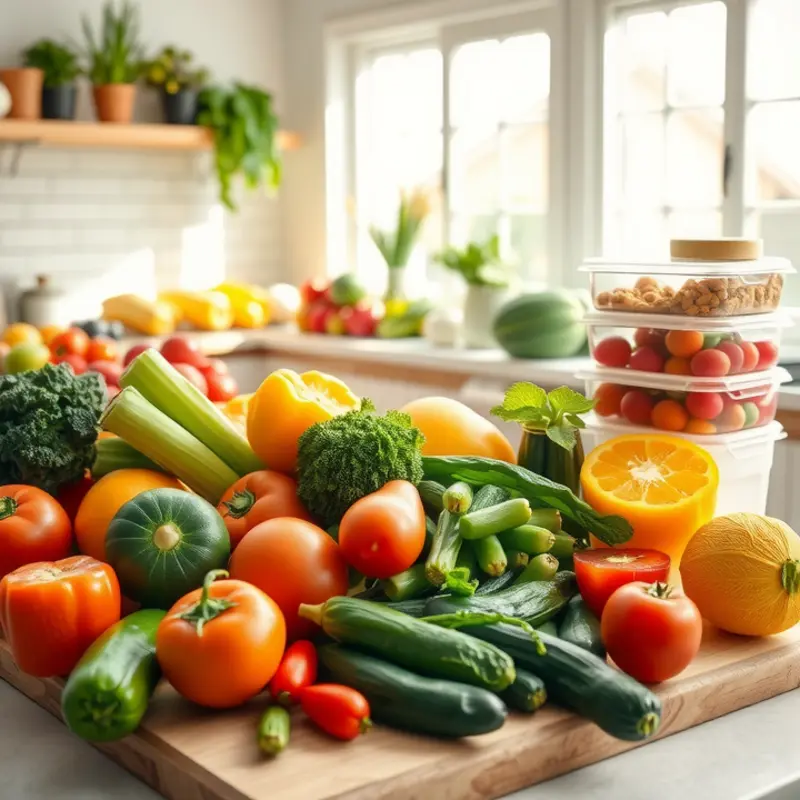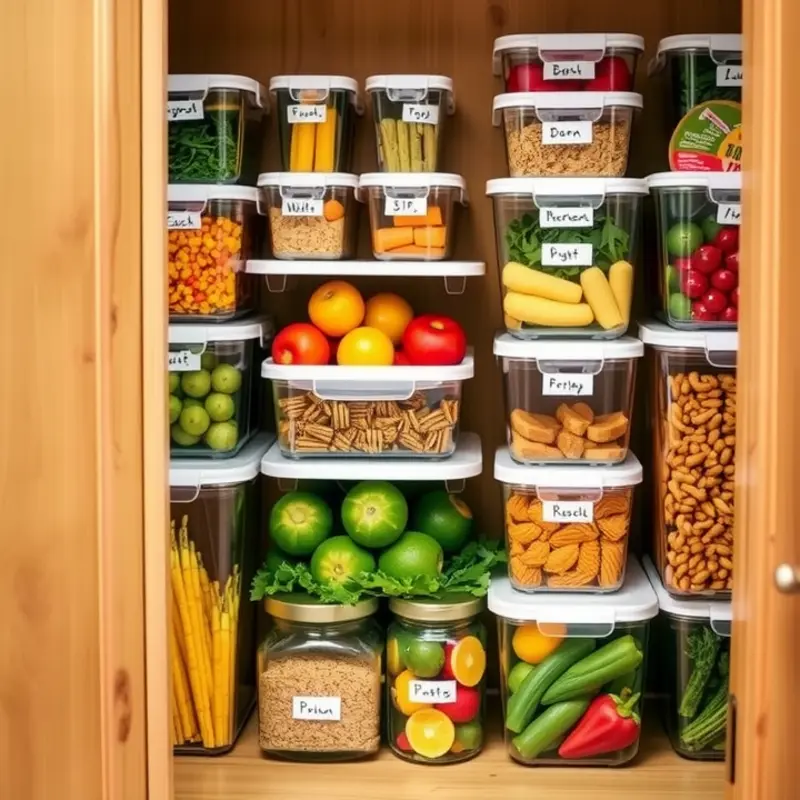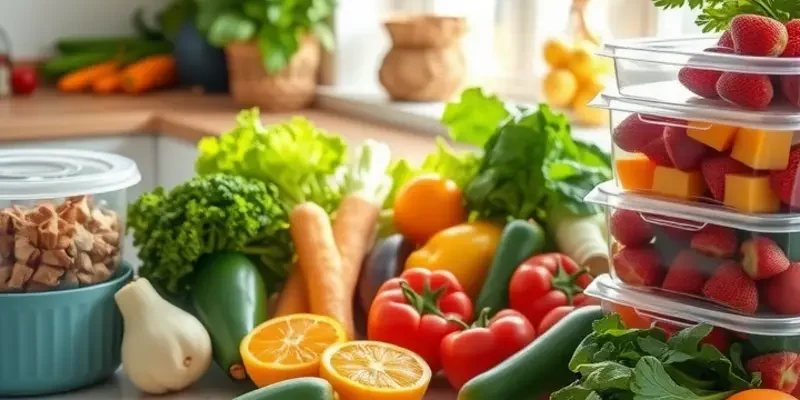Batch cooking is an effective way to manage your meals while minimizing food waste. This approach not only saves time but also helps in making the most of your ingredients. By preparing larger quantities of food at one time, you can optimize your food storage methods, enhance your meal planning, and ensure that you get the most out of the items you purchase. Whether you’re a seasoned chef or just starting out, understanding how to batch cook can elevate your kitchen management skills significantly.
Getting Started: The Essentials of Batch Cooking

Batch cooking offers a strategic approach to feeding yourself and your household efficiently. Starting with the essentials can set you up for success, transforming how you view meal preparation. Let’s dive into the foundational elements of batch cooking, from the equipment you’ll need, to smart ingredient choices, and effective meal planning strategies.
To embark on your batch cooking journey, first consider the necessary equipment. A large, quality stockpot is fundamental for preparing soups, stews, and broths in substantial quantities. Likewise, a set of sturdy baking sheets will allow you to roast vegetables or bake proteins efficiently. Don’t overlook the value of storage containers—opt for those that are freezer and microwave safe, preferably clear for easy identification of their contents. Investing in a slow cooker or pressure cooker can further enhance your ability to prepare a variety of dishes with minimal effort.
Ingredient selection is crucial in maximizing the impact of your batch cooking. Focus on versatile ingredients that can be used across multiple meals. Grains like brown rice and quinoa, proteins such as chicken thighs and lentils, and vegetables including bell peppers and zucchini offer flexibility. Consider dishes that align with your dietary preferences, ensuring they form a balanced and fulfilling weekly menu. Opt for ingredients that are in season, as they’re often more affordable and flavorful, contributing to both taste and budget efficiency.
Effective meal planning is the backbone of successful batch cooking. Taking the time to create a weekly or bi-weekly meal plan greatly simplifies your shopping lists and reduces impulse purchases, minimizing waste. Start by mapping out meals that share common ingredients—this minimizes the different types of products you need to buy. For example, roasted vegetables can accompany both grilled chicken for dinner and enhance a salad the next day. Label and date your stored meals to simplify the process of rotating dishes, ensuring nothing goes to waste.
Preparation is key to making batch cooking a seamless part of your routine. Set aside dedicated time each week to prepare ingredients and cook meals. Chop vegetables in advance and portion out snacks and meal components to streamline your daily routine. If you find specific ingredients you haven’t used as planned, get creative in finding alternative uses—zucchinis can become noodles, or ripe bananas can be blended into a smoothie.
By starting with the right equipment and planning strategies, you enhance not only your efficiency but also your capacity to reduce waste significantly. Batch cooking is more than a method; it’s a lifestyle choice that respects your time and resources. Embrace these initial steps, and watch as your kitchen transforms into a hub of organization and sustainability.
Mastering Food Storage: Keep Your Meals Fresh

Effective food storage is crucial for preventing waste and extending the life of your batch-cooked meals. Selecting the right containers, labeling correctly, and employing proper storing techniques are key steps to success.
Firstly, choosing the right containers can make or break your efforts. Opt for airtight containers, as they preserve freshness by limiting exposure to air. Glass containers, although slightly heavier, are ideal for microwaving and are free from chemicals that might leach into food. Reusable silicone bags offer flexibility and space-saving benefits, making them perfect for freezing soups or stews.
With your containers ready, focus on labeling. This step might seem trivial, yet it significantly impacts organization and food safety. When labeling, include the dish’s name and preparation date. This ensures you’ll consume meals within a safe period. Use waterproof markers or labels with strong adhesive to withstand temperature changes, especially when freezing.
Understanding the intricacies of refrigeration can further optimize freshness. Place your most temperature-sensitive foods, like dairy and meats, on the middle shelves. They maintain a consistent temperature there. Utilize the crisper drawer for vegetables and fruits, adjusting the humidity settings based on the item. High-humidity zones work best for leafy greens, while low-humidity suits items like berries.
Freezing, a reliable method for long-term storage, requires careful technique. Before freezing, cool meals thoroughly in the refrigerator to prevent ice crystals, which impair texture and flavor. Remember to portion your meals; it enables easy thawing and avoids refreezing. When thawing, facilitate safety by moving meals from the freezer to the refrigerator overnight, ensuring even temperature distribution.
Focus on meal diversity to enhance your batch cooking efforts. For instance, add diversity to your stored meals by incorporating different dishes like the Mediterranean Chickpea Salad. It’s a refreshing blend that stores well within two to three days, adding nutritional variety to your meals.
Finally, consider preservation techniques to extend shelf life naturally. Adding citrus or vinegar to certain meal components can deter spoilage. For instance, add lemon juice to sliced avocados or tomatoes before storing to maintain their appearance and nutritional value.
Mastering food storage is an essential skill in your batch-cooking repertoire. By meticulously selecting containers, properly labeling, and applying freezing and refrigeration correctly, you’ll ensure your meals remain tasty and safe to consume. These methods not only preserve effort and expenditure but also contribute to a sustainable lifestyle.
Final words
Batch cooking is not just a time-saver; it’s a powerful strategy for reducing food waste and ensuring your meals are both delicious and efficient. By planning ahead, selecting seasonal ingredients, and employing smart storage techniques, you can enhance your cooking practices while contributing to sustainable food management at home. Remember to experiment with different recipes and methods to find what works best for you. Enjoy the culinary journey that batch cooking provides!







